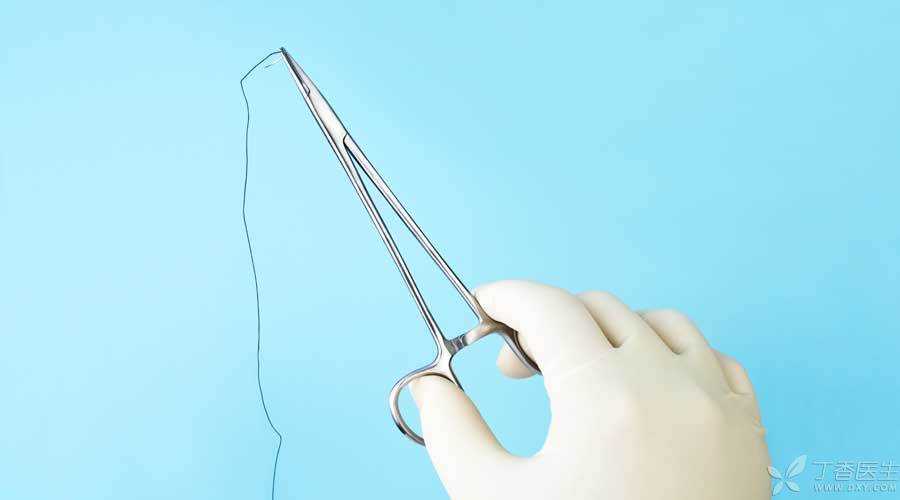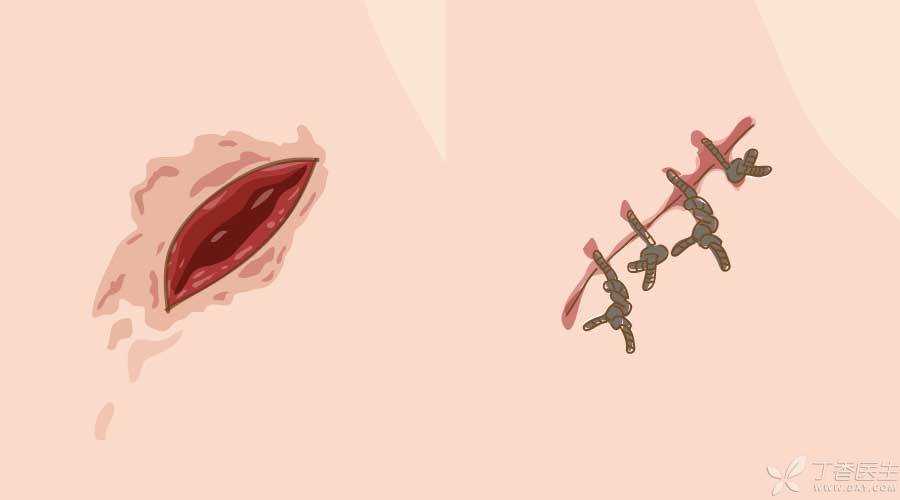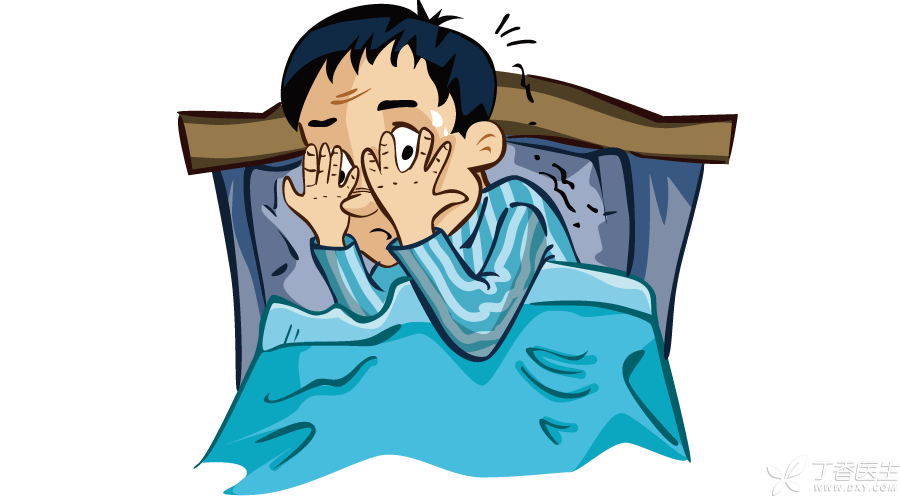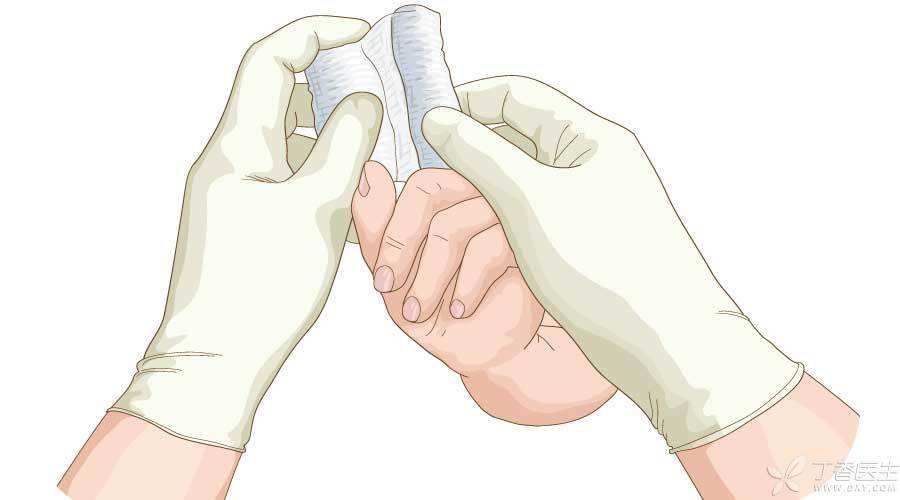
As an abdominal surgeon, every time you change dressing and remove stitches from the wound of the postoperative patient, you will always encounter the patient asking all kinds of questions.
For example:
Doctor, how do you feel a little itchy, a little painful and a little numb near the surgical wound now? When I count how many stitches I have. Can you remove the stitches later? Does it hurt to remove stitches? When can what take a bath? Can gauze be removed in what?
Since there are so many problems, let’s talk about them today.
Before removing stitches

1. Pay attention to what before removing stitches?
The healing of the wound requires a sterile environment, so after the operation, the wound is usually covered with gauze dressing to avoid pollution.
Therefore, before removing stitches, pay attention to keep the dressing dry and clean. If the wound exudes more liquid, or the drainage liquid from other parts wetts the dressing, it will destroy the sterile environment of the wound, cause infection and further affect the wound healing. At this time, the doctor should be contacted in time to replace the dressing.
2. When did what remove stitches?
Of course, this is what the doctor said when what was torn down, it was torn down when what was torn down. Different people and different wounds have different situations.
As long as the wound has healed enough to withstand mild daily activities without splitting, the stitches can be removed.
At this time, some people may think, for the sake of insurance, simply dismantle it later! No, if the stitches are not removed when it is time to remove them, scars will easily form.
For patients with obesity, diabetes, poor nutritional status, corticosteroid use and heavy smoking, the wound healing speed will be slower, and the risk of wound infection and wound dehiscence will be higher. Doctors will adjust according to the specific situation. In short, they must listen to doctors.
Generally speaking, the time for removing stitches at different parts is:
- Face: 3-5 days Scalp: 7-10 days Abdominal back: 7-10 days Limbs: 10-14 days Around joints: 14 days or so
When removing stitches

1. Does it hurt when removing stitches?
When removing stitches, there will be slight discomfort and usually no pain.
In fact, the real time to remove stitches is very short. According to the number of stitches, doctors will try their best to operate gently for a few seconds or a minute or two. There is no need to worry too much about this.
After the stitches are removed, the doctor will confirm the wound condition again, then disinfect and cover the dressing.
2. Pay attention to what when removing stitches?
Some patients are nervous when removing stitches for fear of pain and dare not look with their eyes closed without saying a word. Some are especially concerned about the length of the wound after several stitches. They will look over their heads. Occasionally, patients will ask their families to take photos to keep a souvenir.
Here are some common precautions to give you a reminder:
- When the doctor removes stitches, the patient must cooperate and be prepared according to the posture suggested by the doctor. Don’t move. For patients who are especially nervous and do not say a word, doctors sometimes take the initiative to chat to divert the patient’s attention. For patients who especially like chatting, don’t keep chatting. After all, doctors still have to concentrate on removing stitches. For the same wound, some doctors sew it tightly while others sew it sparsely. The number of stitches sewn does not represent the size of the operation. If you want to know the healing of the wound, just ask the doctor. When the patient sees the wound, he may not know whether it is healing well or not. The doctor will help you judge and tell you. Although stitches removal is a simple job, the patient occasionally pokes his head and moves, and the family members count with their fingers or take photos, etc., which really distract the doctor’s attention.
3. When I removed the stitches, I found that my stitches were not [threads], but [nails]?
In fact, the more common skin suture materials include skin sutures and skin nails.
Skin suture
Surgical sutures are divided into absorbable sutures and non-absorbable sutures according to the absorbability of materials.
- Absorbable suture: It can be absorbed and disappeared in about 2 months. This kind of suture is usually used for deep tissues of large incisions or special parts such as oral cavity. Some absorbable sutures are also used for subcutaneous suture at incisions. This kind of suture is invisible on the skin surface and will be absorbed subcutaneously without removal after surgery. Non-absorbable suture: It is the main suture to close the skin incision and needs to be removed after the skin heals.
Skin nail
Skin nails are a new method of skin suture, made of stainless steel or titanium. Common skin nails are similar to staples, and their principle is similar to staples to close the skin on both sides.
Compared with sutures, skin nails have the advantages of lighter inflammatory reaction, less difficulty in causing infection, quick incision closure, convenient nail removal than stitches removal, and improved the working efficiency of doctors.
However, skin nails are generally not suitable for face, hands or other superficial parts of tendons and nerves, and special nail removers are required for removal.
After removal of stitches

1. Pay attention to what after removing stitches?
- Don’t touch it casually: the wound that has just been removed still has needle holes and the skin is not completely closed. Never touch the wound directly with your hands to see if the wound has grown well. If you really want to look at the wound or change gauze, you must wash your hands first. Moderate activities: removable stitches mean that the wound has healed initially, but it does not mean that it is completely healed. Mild activities, such as walking, will not affect the wound, but will also be conducive to the recovery of physical strength and digestive function. However, large and intense exercises cannot be carried out at this time to prevent the wound from cracking. Sun protection: Compared with normal skin, the new skin on the wound is more delicate, sensitive to sunlight, and easy to sunburn and form scars. It is recommended that patients pay attention to sun protection of the wound skin within 3 months after operation to avoid sunburn and scar formation. Use skin care products with caution: It is recommended not to use skin care products on wound skin in the short term to avoid infection or allergic reaction.
2. Red, swollen, itchy, how to do?
After the stitches are removed, the skin will appear slight redness, swelling, itching and a small amount of exudate, which are normal conditions. At first, the skin near the wound will become slightly hard. Then within 2-6 months, the discomfort of the skin will gradually fade away, so don’t worry too much.
3. Need to seek help from a doctor in case of what?
However, if the following situations occur after stitches are removed, contact the doctor in time and never handle them by yourself:
- The skin near the wound with body temperature exceeding 38 degrees is obviously painful, red, ecchymosis and bleeding, and exudate is obviously increased.
When can what take a bath?
It is estimated that all patients with wounds are very concerned about this problem.
- Wounds on head, face or arm: As long as the wounds are not wet before stitches are removed, they can be washed at any time. Wounds on other parts: Be sure to keep the wounds dry and clean before removing stitches, and washing is not recommended. Wounds after stitches are removed: Dressing can be removed and showered after 24 hours, and skin can be dried in time after washing.
In short, because each patient’s physical condition and condition are different, the care of surgical wounds also needs to be adjusted appropriately. It is best to communicate with the doctor about wound care before discharge, so as to make the most basic judgment in case of any situation and consult the doctor in time when necessary.
